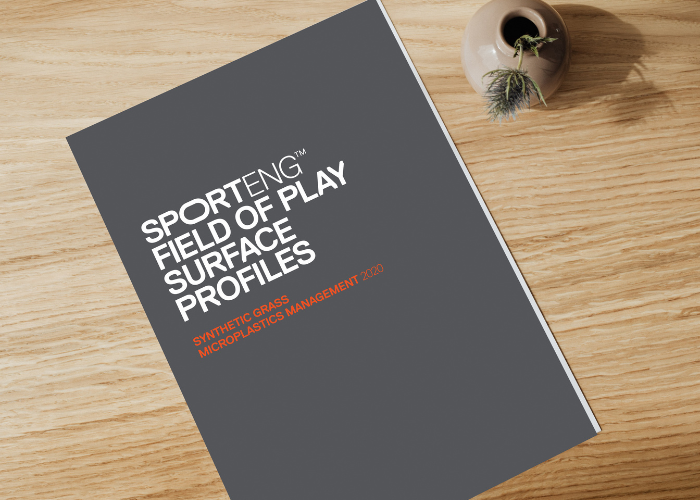SPORTENG specialises in the planning, design and construction phase consulting services of Fields of Play across all sports in Australia. Our experienced team all contribute towards designing high-quality Fields of Play for all levels of use.
Hockey was traditionally played on natural turf pitches, and there are still some facilities where this is still the case. But over the years, hockey pitches are constructed with a sand filled synthetic or an artificial grass surface.
.webp?width=1160&height=773&name=Hockey_Overview%20(1).webp)
The International Hockey Federation (FIH) has five Field Categories that inform the pitch dimensions, length of the run-offs and the maximum pitch surface gradients.
There are five FIH Field Categories:
Due to the relationship between ball and surface, it’s important that the hockey field design meets the FIH standards and ensures the longevity of surface tolerances.
Our technical expertise underpins all our projects, and we are regularly called upon to work on projects of high significance.
No matter if you’re a governing body or a local school, you will benefit from a sports field that puts the athlete first.
We guarantee that SPORTENG’s designs will meet your needs, while complying with the FIH standards.
SPORTENG projects run on time and on budget due to our team’s comprehensive 3D design work, exceptional engineering expertise, agronomic and irrigation consultation, along with clear on-site direction.
SPORTENG lives and breathes Fields of Play. We take our love of the game from the grandstand right into our office. We’re proud to be Australia’s leading Field of Play design consultancy.
.webp?width=545&height=363&name=Hockey_DesignApproach%20(1).webp)
Our attention to detail is reflected in our mantra, ‘measure twice, cut once’.
We’re dedicated to achieving the best results for your venue and its athletes, whether it’s a local legend or the next international star.
When it comes to hockey fields, we ensure the design meets the intended level of use. Whether it’s an elite field with weekly games or a community field with irregular games, we tailor our design to suit the end user’s needs.
We optimise every aspect of your facility by adequately understanding the inherent engineering properties of all surfaces and building materials.
.webp?width=545&height=363&name=Hockey_Sustainability%20(1).webp)
Here at SPORTENG, we take a sustainable approach to all our designs. Not happy with just the status quo, we always strive to investigate new designs and construction techniques that deliver positive environmental outcomes
We believe sustainability is intertwined with sports greatness.
SPORTENG’s engineers use recycled material in hockey field pavement, which we specify in our designs. By using recycled material, we’re reducing the embodied carbon in the design by preventing virgin material from being extracted at quarries and transported to site.
When a synthetic grass surface is used frequently, the microplastic grass yarns can become shredded and displaced. The design of the hockey field should include key design elements that help prevent microplastics being displaced from the field and into the surrounding environment.
Optimize your synthetic grass Field of Play.


The SPORTENG team considers the whole-of-life cycle and the use of recycled materials at every stage of design and construction. We make sure that a sustainable end-product starts at the beginning of design.
There are a range of synthetic grass systems that meet the FIH approved systems, but some of the most common include:
.webp?width=545&height=363&name=Hockey_SurfaceOptions%20(1).webp)
Like other Fields of Play, it is important that the pavement base is designed and constructed correctly to ensure the surface levels and required FIH tolerances are maintained for the field’s design life.
.webp?width=545&height=363&name=Hockey_Engineering%20(1).webp)
Most A-grade hockey facilities are constructed from a flexible pavement, such as an asphalt layer overlying a crushed rock base. A flexible pavement will keep project costs down and tighten surface tolerances through the use of a correctly calibrated asphalt paver.
Synthetic grass hockey surfaces perform best when damp. Our team are well-versed in striking the right balance between keeping the surface damp for improved playing conditions, but also allowing the surface to drain in a rain event. The relationship between the surface gradient, pavement materials and synthetic grass product will influence the outcome.
All perimeter infrastructure need to be located outside the FIH prescribed run-offs.
.webp?width=545&height=363&name=Hockey_Requirements%20(1).webp)
The synthetic grass surface utilised for a hockey field should be free of manufacturing defects and meet the FIH performance testing requirements. The FIH have rigorous testing procedures that must be met to certify an installed system.
Shockpads are an important requirement for hockey fields. Due to the short pile height of the synthetic grass systems, a shockpad is required beneath the grass system. This ensures that all FIH performance requirements are met. A shockpad should have at least a minimum of two (2) overlying installed synthetic grass products.
The level of competition will often influence the hockey pitch’s side and end run-offs. The FIH specifies a minimum level of run-off for a hockey field with desired run-offs typically greater than the minimum.
Currently, elite hockey facilities across the globe are required to be wetted by a perimeter irrigation system. The application of water across the surface helps to improve the playability of the surface.